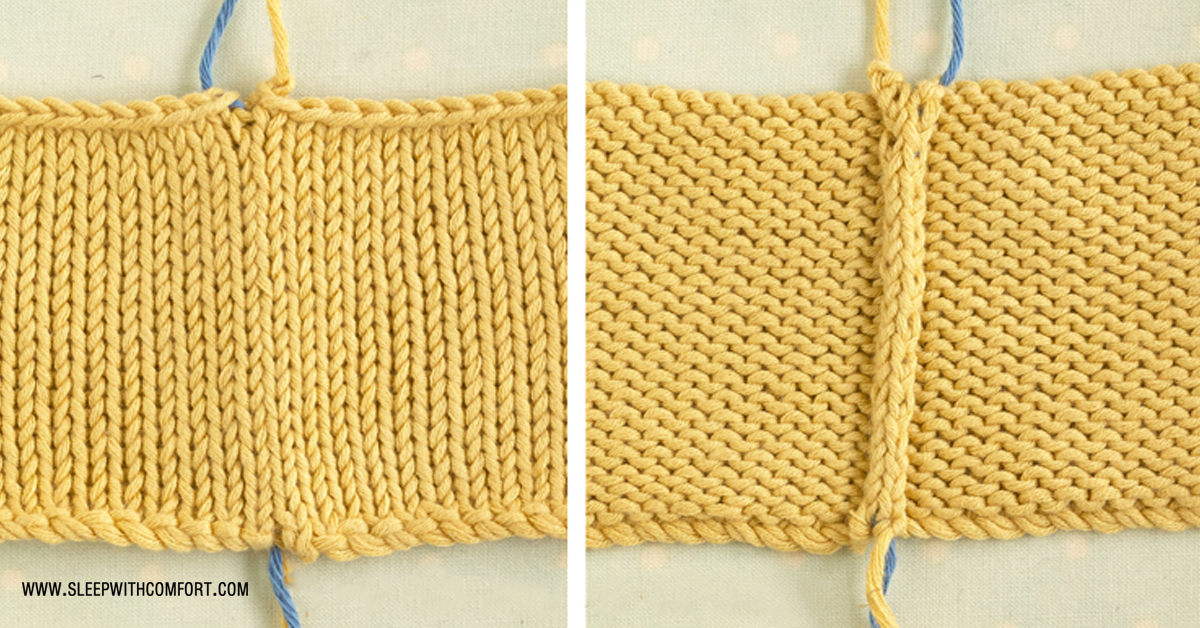Disclosure :Sleepwithcomfort is reader-supported. When you buy through links on our site, we may earn an affiliate commission.
Knitting is a complex craft used to create various types of clothing. By putting the other methods into practice, you can create clothing, bedding, cleaning cloths, and much more. Knitting with the mattress stitch is one of these methods. Mattress stitches don’t happen often. Most people believe that this is not because it is challenging to master. It’s easy to learn how to knit mattress stitches. Your mind has now been cleared about “What is a mattress stitch in knitting?
The mattress stitch is a technique for connecting knit pieces to create a single, seamless piece. The mattress stitch is simple to learn and may be used whenever you need to link knitted pieces together. Vertical seaming can be finished using the Mattress Stitch. It makes an undetectable connection between parts worked in ribbing or stockinet stitch, making it ideal for various tasks, including sewing the front and back of a garment together. You would generally use the same yarn as your knit parts.
Also read our article on How to stitch a mattress
What Is a Mattress Stitch In Knitting In 2023:
As described earlier, an invisible vertical seam known as a mattress stitch connects two knitted sections side by side. The seam is adjustable, clean, and robust, making it ideal for completing various items, including colorful patchwork blankets and cushions.
When is a mattress stitch required?
After knowing, “What is a mattress stitch in knitting?” Now you will be able to know when a mattress is required stitching. Only when the two components have an equal number of stitched rows can a mattress stitch be used. It is ideal for designs that incorporate ribbing or the stockinette stitch. Anytime you need a flat join, you should use this. Even you can adjust easily in any size due to the stitch’s exterior invisibility.
Must read article How to Measure a Mattress
Material/Tools/ Equipment:
The following materials/tools are essential for mattress stitch knitting:
Needle for sewing knitting
Matching Yarn
2 Knitted pieces for joining
Scissor
How to mattress stitch in knitting?
In this session, you will find a step-by-step guideline for stitching a mattress in knitting.
1. Assembling of pieces
While working on a mattress stitch, you must consider creating the same designs on both sides. The components that need to be linked must be knit in equal rows with a steady hand. They should be the same length and have their edges lined up when you position them next to one another. You can still sew, but you’ll need to pay more attention to the details if this isn’t the case. The right side of the two parts should be facing you as you place them side by side to be linked after laying them down.
2. Cut the required yarn
While stitching a mattress practically, you will easily find the answer to a question, “What is a mattress stitch in knitting?” You are required to thread out the yarn you are using. About three times the length of the edge you wish to seam should be the optimal measurement length. Put a piece through a blunt darning needle three times the length of the seam you want to connect.
3. Go through the first stitch with your yarn
The thread must be attached to the portion edges. You only need to do this step for the other piece if one piece has a lengthy tail. Take your darning needle and place it in the bottom right corner of the first stitch, starting with the left side of the knitting.
4. Draw a sketch
The mattress stitch uses horizontal bars between the edge and penultimate stitch rather than cutting through the edges. Separate the stitch that forms the edge and the next-to-last stitch. Make a path by forcing a needle through. Do this to link the two parts together.
5. Thread inline
The bottom border of the two parts is now secured to one another. You can now sew the seam using mattress stitching. On the left piece, insert the darning needle between two horizontal lines. Pull the thread upwards from the bottom. Insert the needle between the two parallel horizontal lines on the right piece.
6. Follow the same pattern
As you zigzag from edge to edge for about 2 inches, match the rows from each side.
7. Pull up on the thread.
Hold the seam’s base as soon as the seam is united, and the stitches are no longer visible. To avoid distorting your work, try not to tug it too tightly.
8. Proceed to the top
Sew the ends in to keep them from fraying. The seam line should be undetectable, and the finish should be flawlessly flush.
9. Knot the stitch
To prevent the stitch from loosening once you finish stitching, you must tie the end. Loop the end of the thread and knot after pulling the needle through.
Also read How to find a hole in an air mattress?
Bedding stitch
As it is necessary to know, “What is a mattress stitch in knitting?” You should also know about bedding stitch. There are several different ways that mattress stitching is used. The stitching pattern is utilized in specific mattress-related procedures, as expected. Now, you will find the ways mattress stitching is being used:
1. Side stitching by hand
Hand side-stitching and hand tufting are two features of a high-quality innerspring mattress that are particularly attractive. These increase the support, durability, and firmness of the mattress. The side panel and the pocket springs are attached by handcrafters using ladder stitching to prevent visible seams.
2. Mattress tops
Generally, mattress toppers come in two varieties; euro top and pillow top. Only euro top mattresses use mattress stitching, which explains why those seams are hidden. Mattresses with euro tops are typically made of hybrid memory foam. They provide the best body support and are fantastic for back pain.
3. Mattress covers and coverings
Seamless patterns are another feature of the best mattress covers and protectors. Since there are no seams, dust and bugs have nowhere to hide, giving the bed a more robust defense against them.
Careful Attention
Even when you take particular precautions, it still happens that you skip a few bars and your seam puckers. You should be conscious that the yarn is under a lot of stress from going in and out. You will need to draw the entire length of yarn through each stitch once more if you reverse the seam one stitch at a time. It would be a great deal of friction and will accomplish the following two things:
It will gradually crumble your seaming yarn’s composition (it will untwist and maybe even tear apart). Consider it this way: Each time the yarn passes through, one tiny hair is removed. A single strand of yarn contains hundreds of them. However, none would be left if you repeated it a hundred times. If you were to use it again, you might make a weak structural seam.
Additionally, it might similarly weaken the stitches at the edge. Rip out the seam in its entirety instead. Avoid attempting to reverse-engineer it. Pull until the entire seam unravels in one motion.
Also read How to ship a mattress
Don’t or Do
You should know that, despite your stockinette stitch, the line you make using a mattress stitch has very little give. One thing that can frequently witness is people weaving through the seam’s ridge at the end or ends, strengthening it considerably more and reducing its suppleness even more.
You might or might not be what you want, depending on where your seam is located. If not, weave the tail into the seam at the extreme margins, stopping short of crossing over to the other side.
Conclusion:
Consider the magic that can be created using a concealed seam. Mattress stitch knitting, when done correctly, can help you distinguish your creation from similar designs. This technique polishes the edges of any object, producing a tidy and sturdy seam. Jumpers, cushions, mattresses, pillows, blankets, and bed cover frequently employ this stitching technique.
After reading the complete article, you know about “What is a mattress stitch in knitting,” but you have also learned everything there is to know about mattress stitches. If you keep more and more practice, you will also become an expert at the technique by using it repeatedly.


